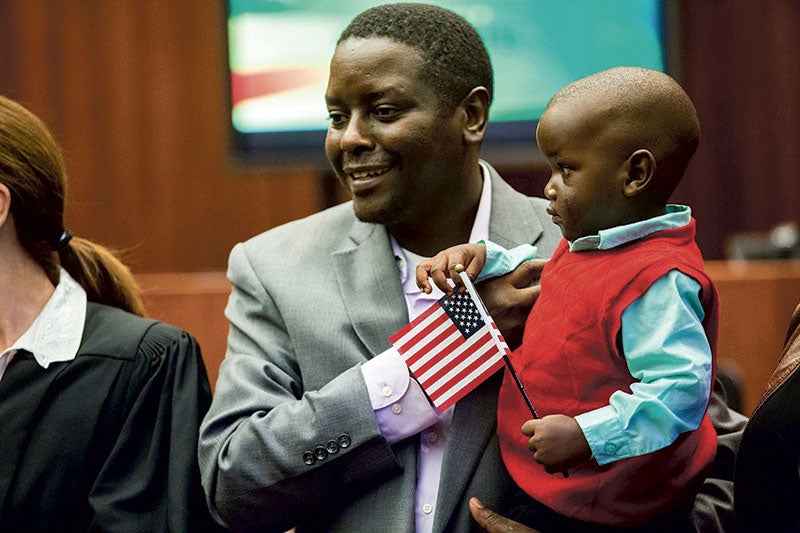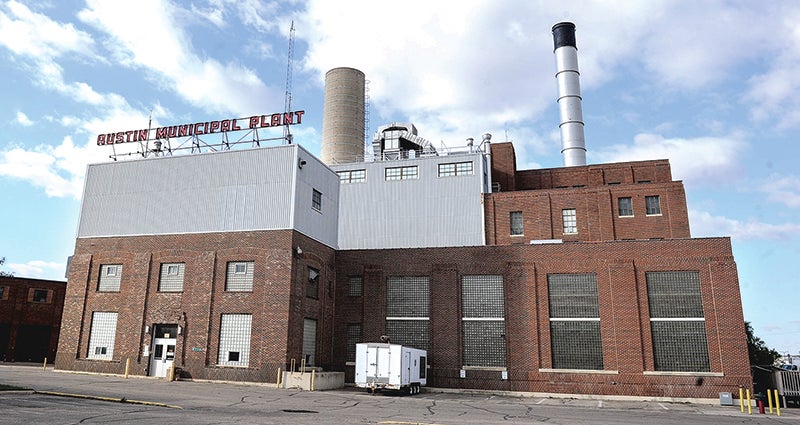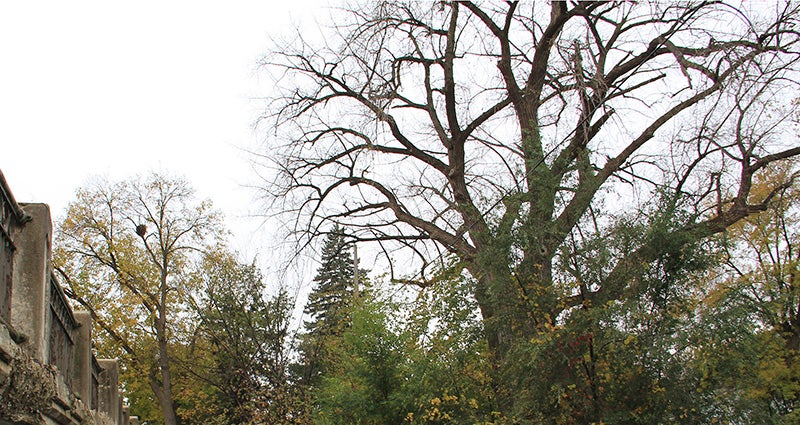Residents voice concerns about road plan; 4 street projects get OK, 1 held
Published 10:56 am Thursday, February 18, 2016
Residents voiced mixed opinions to the Austin City Council during a public hearing Tuesday about a plan to widen Fourth Drive Southwest and add a bike trail to parts of the road.
While the Austin City Council approved four other road projects to start later this year, it continued a public hearing on Fourth Drive Southwest in the southwest Turtle Creek area after several residents voiced fears that the road and trail would take part of their yard or that it would affect the rural feel.
“I love the peace and quiet that goes on after 6 o’clock every night,” resident David DeFor said during the meeting. “I love to see the deer, the turkeys, even the raccoons, possums, rabbits and the squirrels in my yard, I feed some of them. But really, honest to God, it hurts me when somebody comes marking on my property like this, with colors that says, ‘Well we’re going to go this far.’ It’s going to radically change, radically change my lifestyle that I paid for.”
The $1.3 million project calls for Fourth Drive Southwest to be widened from 24 to 38 feet with 8-foot parking lanes and 11-foot driving lanes. The current conditions of the road have steep ditches and deteriorated pavement because of subsoils. The plan would also add a 10-foot wide bike trail next to the roadway or with a grass boulevard between the curb and trail.
Along with concerns about the new roadway and trail taking residents’ yard space, other concerns included possible removal of 100-plus year old trees and possible flooding.
Public Works Director Steven Lang said the road would not come onto peoples’ property, because it would still be within the public right-of-way.
“Based on what I’ve heard from the county engineer with where they’re laying it out, there’s not a plan to acquire property beyond the right-of-way line,” Lang said. “In most cases, the right-of-way line is approximately 33 feet to each side of the centerline.”
Residents also questioned why the road would be turned into an urban road from a rural road. Residents said their driveways are large enough and they don’t park on the street.
“To me this is rural and we don’t need curbs and gutters,” Donna DeFor said. “We all have huge driveways, nobody parks along that street. I don’t see a reason for that. But I don’t want all my big trees gone. We didn’t buy that land to have no front yard and beautiful trees.”
In order to widen the roads, the ditches would be filled in, which raised concerns for flooding. Resident Sherri Weaver said the current elevation of the road protects that neighborhood from the river.
Lang said the city is well aware of the water elevation and looked at the 100-year water surface elevation, which is being incorporated into the design so the roadway is not lowered below that elevation.
“That’s not to say that we may not get something larger, 100 year, multiple years in a row. Well, we might get something that’s greater [and] water may go over the road,” Lang said. “We’re going to design it based on the information we know and we won’t lower it lower than the 100 year elevation.”
The project is a joint effort between the city and county, whereas the city takes care of roads in Austin and the county takes care of the bridges in Austin. The road was originally graded in 1936 and resurfaced in 1985. Lang recommended not resurfacing the roadway because it would be a “very short-term band aid.”
Bike concerns
Residents offered varied opinions on the new bike trail proposed to be constructed from the Turtle Creek Bridge to Calvary Cemetery and extend south to County Road 28.
Many residents said they ride bikes on Fourth Drive Southwest, but they said it’s dangerous, especially when approaching County Road 28.
But residents are concerned with how far the bike trail will go into their yards.
“I do not want a trail that goes through my yard,” resident Eric Harder said. “As much as I am happy with trying to develop the park and trail system, I don’t think it should be going through a private person’s yard to be able to get that to happen.”
However, Lang said there is no plan to acquire property for the trail, as it will be in the public right-of-way and not on people’s property.
Residents also asked where people using the trail would go after reaching County Road 28, a road resident Scott Wermager called busy and dangerous.
“I bike out that way and I’ve been on County Road 28 and I’ve been on 105, they’re ungodly dangerous,” he said. “It has nowhere to go from the cemetery to 28th street that’s going to make me feel safer, unless you take 28th Street and go all the way to Lyle or Albert Lea or wherever that’s going to be. At this point, my yard is more precious to me.”
But the trail planned received much support too. Steve Kime, head of Vision 2020’s Bike/Walk Trail Committee, said the hope is for the trail to eventually connect to the city system and go further.
“Austin is a small city with big opportunity. I support the plan as stated,” Kime said. “[We have to] look beyond, take those steps to get going and we have to start somewhere.”
Suzanne McCarthy, who lives in northeast Austin, said people use the bike trail by East Side Lake all the time and she herself started riding there about seven years ago.
“The health benefits have been amazing, weight loss, feel better,” she said. “I think it’s a great opportunity. I can see where the homeowners are coming from. I would say be happy. Man, you’re lucky to have it.”
Resident Jim Burroughs agreed.
“I strongly support what the city is doing to bring us into a community,” Burroughs said. “We need to be forward thinking, look to the future and design that way,” he said. “Our roads won’t be rebuilt for another how many years, now’s the time to do it. Having a bike path going by a home increases the value.”
Karissa Studier, co-coordinator of the Statewide Health Improvement Program (SHIP) for Mower County, also supported the trail system.
The City Council continued the Turtle Creek public hearing to the March 7 meeting so Lang could provide more visual information to the residents, though he argued pushing it back might create problems. Because the project is receiving state and federal funding, Lang said the plans must still go through state and federal offices.
The federal level aid will pay $800,000 for the project, and the state will pay $200,000. The city will also receive $300,000 from the state gas tax, according to Lang.
About a quarter of the project will still be assessed to one side of the road and the money from that goes to pay for another 50 percent for roads on other projects, he added.
Other projects
The city council approved other projects discussed at Tuesday’s hearing after hearing a few concerns.
Work on Main Street and Third Avenue Southwest, a state aid project, should start after the Fourth of July and be completed by fall; however, construction on Third Avenue Southwest could start sooner, according to Lang.
Another project is planned between the Austin YMCA and Fourth Street Northwest.
“The roadway pavement has deteriorated to such a point that maintenance is no longer possible,” Lang said. “It’s really time to look at full replacement in this area.”
One resident voiced concerns about trees possibly being removed and children who walk up and down that street, as he was afraid traffic would go faster after the project.
Lang said the trees would be saved.
The man also asked if the street needed to be widened to 36 feet, and Lang said it’s a standard that’s been in place for many years because of parking and winter snow build up.
Another, multiphase project is planned in the Woodson School area, with the first phase completed in 2011.
“We’re trying to break up the area so that it limits the impact to people and how far they have to walk during a construction project,” Lang said.
The last phase will be completed in 2017, though Lang said the city could possibly run into problems with ground water. But he said the city will accommodate that into their design so homes do not need to sump pump more water than they already do.
Construction will start after school lets out in June and be completed before it starts again in September.
A two-year South Crane project was also approved.
“The roadways are likely in that 1950s vintage condition,” Lang said. “They are over 60 years old. They have serviced this neighborhood well but it’s time to replace them.”
Pastor Dale Christensen of Crane Community Chapel expressed concerns about a sidewalk on Ninth Street Northeast and a $3,900 assessment to fix that sidewalk. He argued people rarely use it and rather cut through the church parking lot instead.
He requested the sidewalk be removed. Lang said it would be possible if the church submits a request in writing to the City Council, so the request can be investigated.
Project effects
Lang said the road upgrades will provide benefits to safety along with improved drainage, more visually appealing streets, increased lifespan of underground utilities, decreased maintenance costs, handicap accessible ramps and sidewalk repairs to improve pedestrian safety.
Assessment rates will be $43 per linear foot of frontage for residential and $61.75 for commercial.
Sidewalk assessment rates will be $4.25 per square foot of deficient sidewalk for a 4 inch sidewalk, which adds up to about $110 to $115 per deficient sidewalk panel and $5.75 for a 6 inch sidewalk, which adds up to about $150 to $155 per panel.
For each road construction project, residents will be charged an assessment fee, which is payable in four options. Bills will be sent out in late August or early September.
Option one is pay the full amount by Oct. 31, 2016 without interest. Option two is pay at least 50 percent of the amount by the same date, without interest. The remainder would be added to the resident’s 2017 taxes and spread out over 15 years with interest rate of 4.5 percent. Option three is do not pay anything by Oct. 31, 2016, in which the entire balance would be added to taxes, spread over 15 years with interest. Option four is if an individual is over the age of 65, financially qualifies and lives on the property, the assessment may be deferred with interest until the property is sold or the house is paid off, Lang said.




